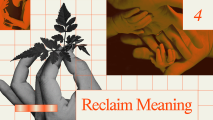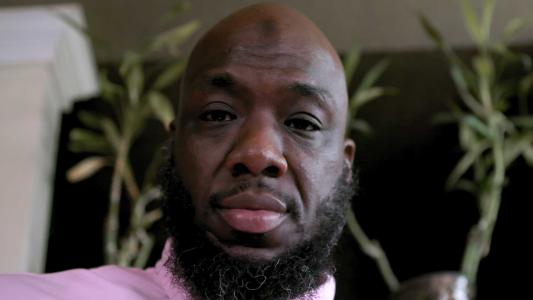Cognitive behavioral therapy (CBT) has been called the gold standard of psychotherapy, providing a model for treating everything from depression and anxiety to anger and PTSD. In the past several years, the possibility of using CBT to tackle big social problems, like crime, gangs, and prisoner recidivism, has also gained a lot of ground.
The basic theory behind CBT is that your thoughts, feelings, and behaviors are all related. For instance, a pattern of negative thoughts about yourself can lead to feelings of anxiety or worthlessness, which can lead to self-defeating behaviors, like avoiding social contact. That behavior increases isolation, which leads to more loneliness and self-doubt. Some people will turn to easy but self-destructive means of coping, like alcohol and drugs, which lead to still more problems.
CBT aims to disrupt this cycle by breaking negative cycles of thought, slowing down your automatic emotional reactions, and avoiding instinctive responses. The point of the therapy is to help people recognize when they are slipping into self-defeating beliefs and thoughts, identify what they are feeling and why, and identify and change behaviors that lead to these thoughts and feelings.
Many cities, states, and charitable groups around the world have poured money into CBT programs, with the goals of disrupting patterns of violence, diverting young people away from crime, and rehabilitating prison inmates.
The results looked promising: a growing number of studies have found that CBT can be effective at deterring crime, managing anger, and disrupting violent impulses. Several randomized control trials (RCTs) have been done testing a CBT program for youth in Chicago, called Becoming a Man. The results, published in the prestigious Quarterly Journal of Economics, found strikingly positive results:
Participation in the program reduced total arrests during the intervention period by 28–35%, reduced violent-crime arrests by 45–50%, improved school engagement, and in the first study where we have follow-up data, increased graduation rates by 12–19%.
But in January 2019, one of the largest efforts to scale up CBT to reduce recidivism was effectively declared a failure by California’s state auditor. According to the audit, the state’s $300 million annual investment in CBT programs across the prison system yielded no detectable benefits for recidivism, overall: “This report concludes that inmates who completed in-prison cognitive behavioral therapy (CBT) programs recidivated at about the same rate as inmates who did not complete the programs.”
So, does CBT really work to prevent crime? Do we need something teaching restraint and reflection on the front end, or should we simply increase punishments for the people and gangs that perpetuate violence?
The Problems Are Huge
America has unusually large problems with crime and incarceration, with much higher rates of violence and incarceration compared to other developed countries. On average, the murder rate in the United States is three times higher than in the European Union. The most dangerous US cities, like St. Louis and Baltimore, routinely have murder rates 10-20 times higher than the deadliest places in Europe.
At the same time, the United States also leads the world in incarceration. According to the World Prison Brief, the US has the largest incarcerated population in the world. On any given day, 2.3 million people are locked away in American prisons and jails, a rate six times higher than the EU.
Yet despite this huge punishment system (and the harsh sentences it can deal out), crime is rarely and randomly penalized. In the US, most offenses are not reported to police, and most reported crimes are never solved.
In 2017, according to the National Crime Victimization Survey (NCVS), 5.6 million people were victims of violence—but according to the FBI, police made just 30 arrests for every 100 victimizations. For serious violent crimes, the rate was only 25 arrests per 100 victimizations. Even murder (which is almost always reported and naturally gets a lot of police attention) usually goes unpunished in America.
This means that most violence has to be dealt with outside the criminal justice system, in one way or another. In fact, according to the NCVS, the number one reason victims don’t go to the police is that they have “dealt with it another way,” often “handling it informally,” as a personal matter.
That’s not necessarily a bad thing. There are lawsuits, employer complaints, insurance, and private resolutions between individuals, sometimes mediated by families, churches, schools, and employers. In some cases, this may be more efficient, constructive, and fair than leaving it to the slow grind of the criminal justice system.
But other times, the informal means of handling violence outside the law can be dangerous and counterproductive. In places where people are often at risk of being victimized and can’t rely on formal authorities, they can form norms, habits, and groups that ultimately escalate and perpetuate conflict.
But if we’re only attacking those symptoms, without understanding why they exist, we can do more harm than good. A fever is painful, and sometimes it can kill you, but it’s also how your body fights off attackers.
Fear, Honor, and Gangs
In dangerous places, aggression and violence are not just abstract social problems, but also habits of thought and behavior ingrained through long experience. Not responding to disrespect risks being labeled as weak, which can damage your social standing and invite further victimization. This creates an environment where people are chronically on edge, anxious about status, safety, and loyalty.
Gangs thrive in such fraught environments, like dangerous neighborhoods, schools, and prisons. Gangs are usually thought of as a cause of violence (and they certainly are), but for gang members, they are also a way to prevent victimization. As the economist David Skarbek documents in his book The Social Order of the Underworld, people use gangs to solve specific problems, including protection and dispute resolution, in circumstances where formal institutions can’t or won’t help.
Skarbek looked at the underground economy in prisons, but the same logic applies to black markets on the outside. It’s not a coincidence that gangs overlap with criminal activity. Drug dealers who get robbed or attacked can’t call the cops, so they join groups for protection. These gangs provide internal discipline and external defense, resolving disputes between members and making deals with other gangs over territory.
Unfortunately, when conflicts can’t be resolved peacefully between gangs, the violence scales up into full-blown warfare—and once a war breaks out, retribution and revenge form a cycle that can be hard to break. At one time, this might lead to blood feuds and vendettas, like the Hatfields and McCoys, that span generations.
Family ties still drive revenge today, but violence also cascades through more complex social groups. A study of shootings in Chicago found that shootings spread like a “contagion” across social networks. The model found that if someone is “exposed” to violence, when a friend or acquaintance is shot, they are much more likely to soon become a victim (or perpetrator) themselves.
But efforts to simply break up organized crime can backfire. In Chicago, the police tried to “decapitate” the gang hierarchies, systematically arresting and imprisoning leadership. The bigger gangs did fall apart, but because police didn’t understand the function that gangs were providing, violence exploded. The gangs have splintered into dozens of smaller, less organized crews, exponentially increasing the possible conflicts between groups and making it harder to call a ceasefire.
The upshot to all of this is that we need to make sure we understand how our formal strategies for dealing with violence fit into our informal mechanisms. We don’t want to break the dam held up by even very bad groups (such as Mexican cartels or urban gangs) without understanding why they exist and having a strategy for what comes next.
On the other side of the equation, programs to promote restraint and disrupt cycles of anger, aggression, escalation, and violence need to understand how and why people came by these social behaviors. The best approach will include greater access to formal, legal mechanisms for stopping violence, while also fostering constructive, nonviolent, informal social means of conflict resolution.
What We Can Expect from CBT
Small programs and pilot studies of CBT, like Becoming a Man in Chicago, really have shown great success at disrupting automatic thoughts and behaviors that lead to violence. They show that you can teach even high-risk youth to diagnose destructive patterns of thought and to train themselves to put a gap between feeling and action—to stop, slow down, and think about whether their instinctive response is going to be helpful or not.
This works even in difficult and hostile environments, like dangerous public schools or neighborhoods.
So why didn’t CBT work for reducing recidivism in California? Part of the problem, according to the LA Times, is that the prisons didn’t do a good job of getting people the help they needed: “State auditors said poor administrative practices resulted in 62% of 24,000 inmates leaving state prisons without having those needs met in fiscal year 2017.”
Another issue found in the audit is that the Department of Corrections has not checked whether the tools they use to identify inmate needs are still accurate or not, and they have not consistently “prioritized those with the highest need.”
At the same time, buried deep in the report’s appendix was a ray of hope for the program. While completing CBT programs had no effect on overall recidivism rates, there was a strong and statistically significant effect for one group: prisoners who scored as a high risk for violence.
High-risk violent inmates who completed at least half of their CBT classes were 13% less likely to return to within a year and 16% less likely to return within two years.
Of course, there’s a danger of cherry-picking results here: the audit looked at outcomes for 26 different subgroups, examining one- and two-year recidivism rates, and testing for significance at three different statistical levels. There were almost certain to find a few hits.
Still, the results for the high-risk violence group were very significant, with less than a 1% probability of showing up by chance. Moreover, the results are exactly what you would expect from looking at the broader research on CBT. Violence is often about anger management, impulse control, and habits of fear and aggression.
Some types of violence, like Chicago and Baltimore’s ongoing gang warfare, are also unlikely to be solved by CBT directly. If a gang member wants to shoot someone who killed their friend, that’s a powerful motive, and disrupting those thoughts and emotions is going to be hard. But reducing the social and psychological need for gangs in the first place could be easier.
It’s less obvious that crimes with a simple economic motive, like burglary or selling drugs, would be strongly affected by training people to think and reflect more. (That might even make a more effective burglar!) Similarly, drug crimes (whether using or dealing) have motives that might be harder to resolve. Drug users still like using drugs, and drug dealers still like making money.
Because both property and drug crimes could land you in prison, if nothing else, more reflection and a cooler head could discourage taking that risk. But maybe not. Property and drug crimes are unlikely to be reported to the police and extremely unlikely to result in an arrest. Diverting people away from those acts might be more difficult and complex than training the mental habits that can help people avoid violence.
This shows where our formal mechanisms for deterring crime can positively intersect with psychological therapy. If there are more police on the street to begin with, and more crimes being solved after the fact, the odds of getting caught go up, so restraint and reflection might be more effective.
The Upshot
The problems of violence, incarceration, and recidivism are complex, interrelated, and hard to unwind, but the toll they have collectively taken on the country (especially on poor and marginalized areas) is clear and devastating.
On a social level, it will take a myriad of economic, cultural, and policy changes to tackle violence. But an individual level, there is strong evidence that CBT could short-circuit the cycles of violence that begin inside our heads. Treating the underlying psychology of violence and integrating that with better policing and fairer prosecution has the potentially radically transform not just the justice system, but American cities as we know them.





